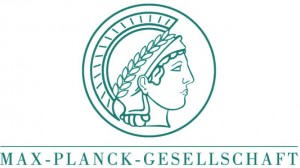I am interested in self-organizing processes, especially synchronization.
Self-organization in wireless communication:
Agreeing on a common timing (synchronization) is beneficial for distributed entities in a large number of applications. For instance, it enables synchronized distributed measurements to track moving objects or the scheduling of communication in wireless communication systems. Yet, how to provide synchronization for distributed systems in a reliable way remains an open challenge: Communication between individual entities is often subject to different individual delays, the network might be sparse, and clocks might not be homogeneous. A promising approach to synchronize a network of distributed entities is by only using local interactions and to communicate as little as possible, for instance by exchanging pulse-like messages, which do not contain information. It is well known that self-organizing processes may induce global synchronization via local interactions, e.g. if all entities act individually by the same rules. How to design these local rules to guarantee global synchronization, however, remains not well understood.
So far, a general statement that guarantees global synchronization from local pulse-interactions could not be achieved if facing the challenges mentioned above.
In my work we derive local interaction rules and mathematically guarantee global synchronization using pulse-coupled oscillator networks. Specifically, we provide two coupling schemes that address different system settings and prove network-wide convergence to synchrony. These proofs hold for systems which face individual random signal delays, inhomogeneous clock rates, arbitrary topologies, and stochastic pulse emission. We also show the robustness of the synchronization process in case of faulty or random pulse detection, incorrect assumptions about the environment and inaccurate oscillators.
We apply the self-organizing synchronization to wireless communication systems. We demonstrate that the local interaction rules derived, enable self-organizing synchronization in wireless communication systems. In our proof-of-concept applications, we address distributed devices which use communication protocols with time slots. These slots are then used for data communication. The devices exchange pulse-like radio or audio signals and are designed to synchronize their time slots.
Self-organization in a bigger picture:
I intend to use the insight on local interaction rules to better understand self-organizing processes in a more general setting, including engineering and social sciences.
Application within a technical system allows to study isolated self-organization processes in the real world. I am convinced that effects in this specific setting can also be found in more complex self-organizing system, such as the interactions of different parties in society, communication amongst humans and interactions in economy.
Projects:
Self-Organizing Synchronization
Triple-S, ROSSY, HiSON
Project Partners:
Max-Planck Institute for Dynamics and Self-Organization
Network Dynamics Group, Göttingen, Germany
Grants and Support:
Forschungförderungsgesellschaft Österreich (FFG),
Industriellenvereinigung Kärnten,
Lakeside Labs


